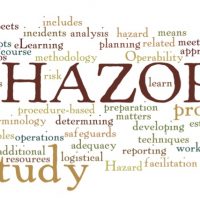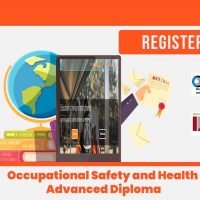Working with chemicals can cause from potential to adversely effects to lives and health of employees. The National Institute for Occupational Safety and Health (NIOSH) in the mid-1970s develop the IDLH Values to ensure that the employees can escape from a given chemical concentration that cause a failure of the respiratory protection equipment or to indicate a maximum level above which only a highly reliable breathing apparatus, providing maximum worker protection, is permitted. For example, firefighters battling a fire where toxic fumes are present may be exposed not only to airborne toxins but also have their view obscured by smoke, preventing them from spotting an escape route.
Immediately Dangerous to Life or Health (IDLH) is a term used to describe hazards in which an acute exposure to the hazard poses a severe risk of immediate health damage, injury, or death. This immediate danger could be a result of the high level of damage that could occur due to short-term exposure to the hazard or due to the hazard’s ability to impair the ability of the employee to leave the hazard area based on animal and human data. An immediately dangerous to life or health value is meant to protect first responders and other workers when they are exposed to toxic chemicals.
Before an employer initiates a respiratory protection program, it must identify whether an atmosphere is or has the potential to be IDLH. This information is used as part of the employer’s respirator selection criteria. For high-risk environments, the most reliable, self-contained personal protective equipment is required. OSHA Standard in Hazardous Waste Operations and Emergency Response mention some requirements like monitoring and buddy system if workers operating within IDLH environments. The table below shown some chemicals with their Chemical Abstract Serial number (CAS) and IDLH Values as a reference:
| S.N. | Chemical Name | CAS Number | IDLH Values |
| 1 | Ammonia | 7664-41-7 | 300 ppm |
| 2 | Chlorine | 7782-50-5 | 10 ppm |
| 3 | DDT | 50-29-3 | 500 mg/m3 |
| 4 | Fluorine | 7782-41-4 | 25 ppm |
| 5 | Nitric Acid | 7697-37-2 | 25 ppm |
| 6 | Carbon Monoxide | 630-08-0 | 1200 ppm |
Working with IDLH atmospheres have some specific respirators as per OSHA like Self Containing Breathing Apparatus (SCBA) that’s certified by NIOSH and has a minimum service life of thirty minutes or Supplied-Air Respirator (SAR) with auxiliary self-contained air supply. In addition, all oxygen-deficient atmospheres (meaning they contain less than 19.5% O2 by volume) are considered IDLH atmospheres or if it’s impossible to identify or reasonably estimate exposure, then the atmosphere must be considered IDLH.
All in all, more than 380 substances with IDLH limits and you can get the IDLH through CAMEO Chemicals and NIOSH Pocket Guide. Workers should not be in an IDLH environment for any length of time unless they are equipped and protected to be in that environment. IDLH is a part from two courses that offered by OSHEQ Planet named Hazardous Materials (https://osheqplanet.com/courseslist#Hazardous_Materials), and HAZWOPER Awareness (https://osheqplanet.com/courseslist/#HAZWOPER_Awareness). Just browse to our online courses and register. We are sure that your safety culture & competency will be completely enhanced.




thank you for such great article